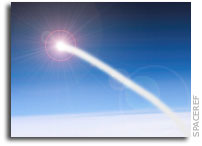GAO: Commercial Space Transportation: Industry Trends and Key Issues Affecting Federal Oversight and International Competitiveness

May 5, 2011 – Summary
Since GAO reported on the commercial space launch industry in 2006 and 2009, the industry has evolved and moved further toward space tourism. Commercial space tourism promises to make human space travel available to the public for the first time. In addition, the National Aeronautics and Space Administration (NASA) plans to use private companies to transport cargo, and eventually personnel, to the International Space Station after NASA retires the space shuttle later in 2011. The Federal Aviation Administration (FAA) oversees the safety of commercial space launches, licensing and monitoring the safety of such launches and of commercial spaceports (sites for launching spacecraft), and promotes the industry.
This testimony addresses (1) recent industry trends, (2) FAA’s related budget request for fiscal year 2012, and (3) challenges that FAA and industry faces. This statement is based on GAO’s October 2006 report and December 2009 testimony on commercial space launches, updated with information GAO gathered from FAA and industry experts in April and May 2011 on industry trends and recent FAA and NASA actions. In past work, GAO recommended that FAA take several actions to improve its oversight of commercial space launches, including assessing its future resource needs. FAA has taken some steps to address the recommendations.
Historically, the commercial space launch industry focused primarily on putting payloads, such as satellites, into orbit, using launch vehicles that did not return to earth. Such launches have dropped off, and the industry is increasing its focus on space tourism. Five manned commercial flights took place in 2004, demonstrating the feasibility of commercial space tourism. Since then, companies have pursued research and development and are further developing vehicles for manned flights. Concurrently, companies and states are developing additional spaceports to accommodate anticipated commercial space tourism flights. States have provided economic incentives for development, and FAA has helped to support infrastructure development. FAA also anticipates an increase in commercial launches, which it expects will increase its oversight responsibilities; thus the agency has requested significantly more resources.
FAA will become responsible in the near term for the licensing and oversight of the commercial transport of NASA cargo and eventually for the licensing and oversight of space tourism flights and for safety regulations for all human commercial space travel. Anticipating an increase in responsibilities, FAA’s fiscal year 2012 budget request would increase spending on commercial space transportation by nearly 75 percent from about $15 million in actual obligations in fiscal year 2010 to about $26.6 million in fiscal year 2012. This would fund an increase of about 45 percent in staffing.
GAO agrees that FAA’s workload is likely to increase but also believes there are uncertainties about how fast the demands on FAA’s resources will grow. In overseeing the commercial space launch industry, including the safety of space tourism, FAA faces several challenges. These include determining whether its current safety regulations are appropriate for all types of commercial space vehicles, operations, and launch sites; continuing to avoid conflicts between its dual role as safety regulator and industry promoter; and addressing policy and procedural issues when it integrates the operations of spacecraft into its next generation air transportation system. The industry faces competitive issues such as high launch costs that affect its ability to sell its services abroad. Finally, coordinating the federal response to the commercial space industry’s expansion is an issue for the federal government in the absence of a national space launch strategy for setting priorities and establishing federal roles.
Highlights Page (PDF), Full Report (PDF, 25 pages), Accessible Text








